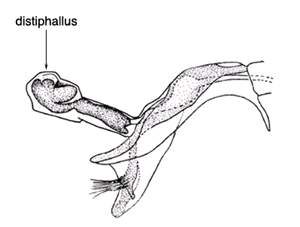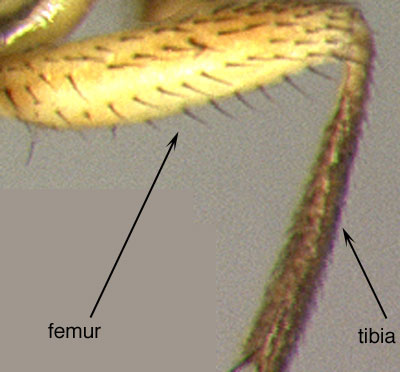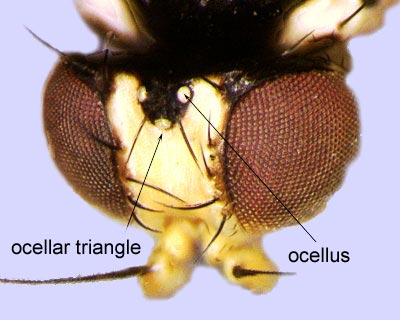A
- acrostichals:
(acr) - minute hairs lying between the two lines of dorso-central bristles
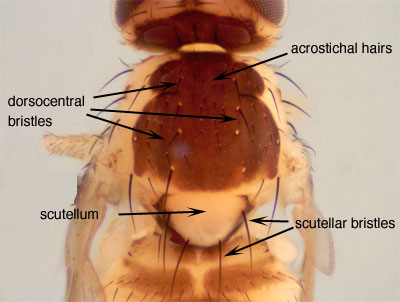
- aedeagal apodeme:� long, rod-like process extending far into the abdomen
and to which the aedeagus is attached
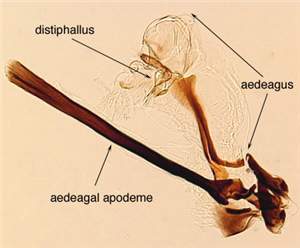
- aedeagus:� male phallus - taxonomically the most important character [requires dissection of males to observe Dempewolf (2004)]
- arista:� thin hair-like part of the third antennal segment consisting of the apical flagellomeres of the third antennal segment
top
B
top
C
- costa:� first longitudinal vein forming upper margin of wing and normally conspicuously thickened
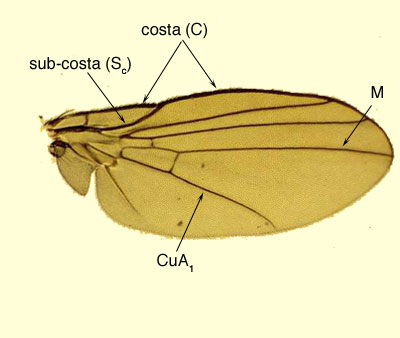
- coxa:� first segment of leg
- coxae:� plural of coxa
top
D
top
E
- ejaculatory apodeme:� an unpaired sclerotized process of the sperm pump (ejaculator)
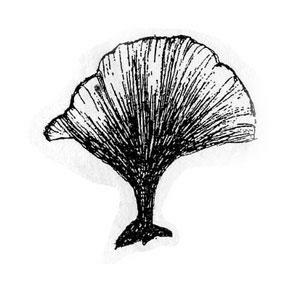
- epandrium:� ninth segment of the male fly - from the posterodorsal
view the epandrium of Agromyzidae is roughly horseshoe-shaped (Dempewolf 2004)

top
F
top
H
- halter:� knoblike, modified hindwing functioning as a balancing
organ - plural = halteres
- halteres:� plural of halter - knoblike, modified hindwing functioning as a balancing organ
top
I
top
J
- jowl:� membranous area below eye (width and shape are often important)
top
L
top
M
top
N
- nomen nudum:� a nomen nudum (Latin, bare name) is a name that fails to meet the requirements for being validly published under the appropriate code of nomenclature (for instance, no published description). A nomen nudum has no official nomenclatorial standing, and does not compete for synonymy, homonymy, etc. Should a name that was previously a nomen nudum ever be validly published, its priority dates from valid publication, not from original appearance.
- notopleuron:� triangular area on side of thorax immediately below or
lateral to transverse suture of mesonotum
top
O
top
P
- palpus:� paired processes adjoining mouthparts
- pleura:� lateral sclerites between the dorsal and sternal parts of the thorax. In general, the body between the dorsal tergum and ventral sternum
- processus longus:� a paired, rod-like structure in male genitalia of Cerodontha genus and in Liriomyza caulophaga (also known as Langfortsatz)

- ptilinal fissure:� see lunule
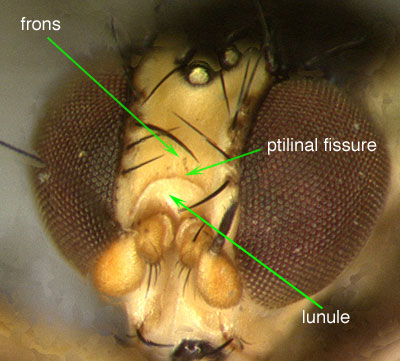
- ptilinum:� a sac-like organ which is evaded at the very
beginning of the adult life to facilitate tearing up the puparium and escaping from the puparial locality.
In
older flies only the ptilinal fissure is
visible, marking the border line between ptilinum (lunule) and frons. In older adult flies
the area where the ptilinum had evaded is called the lunule (Dempewolf 2004)
- puparium:� a puparium consists of the
hardened skin of the third instar larva enclosing the actual pupa. The process
of building the puparium is called pupariation. The
emerging adult fly opens the puparium by expanding its
ptilinum (Dempewolf 2004)
top
R
- r-m:� first (inner) cross-vein of wing
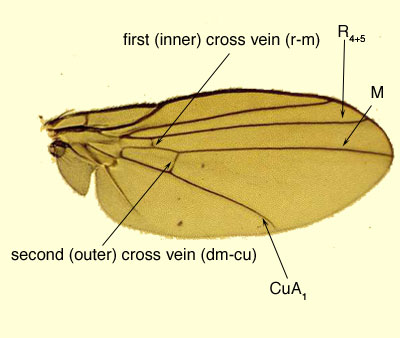
top
S
top
T
top
U
top
V
top




